A Cruise Through France Connects Flying Longhorns to History and One Another

I’ve never been to France or Europe or really anywhere. I’m the classic case of a homebody, content to stay in places I know well and made to keep my feet planted firmly on the ground—not flying across the Atlantic at more than 700 miles per hour.
Nevertheless, I’m here, anxiously but gladly. My fiancé Austin and I are preparing to say hello to 26 Flying Longhorns travelers in Paris, France, before we board an eight-day cruise along the Seine and explore what Normandy has to offer a bunch of curious Texans. I fiddle with my binder of travel tips and the itinerary on the bus from Charles de Gaulle Airport into Paris. One of our tour directors for the week, Charlotta, asks if I’m studying. She’s teasing, but she’s also not wrong. I know I probably look as nervous as I feel, and the paper outlining all my need-to-knows is comforting.
There aren’t any Longhorns on our airport transfer, but I spot their luggage tags in the lines of suitcases when we briefly stop at the hotel serving as the meeting point in Paris. After Austin and I enjoy our first Parisian meal of steak frites and a croque madame, we return to the hotel, exchanging pleasantries and discussing the weather with the first few Texas Exes we’re lucky enough to spot. Of course, everyone is lovely. Austin squeezes my hand at one point, urging me to loosen up. I very obviously don’t.
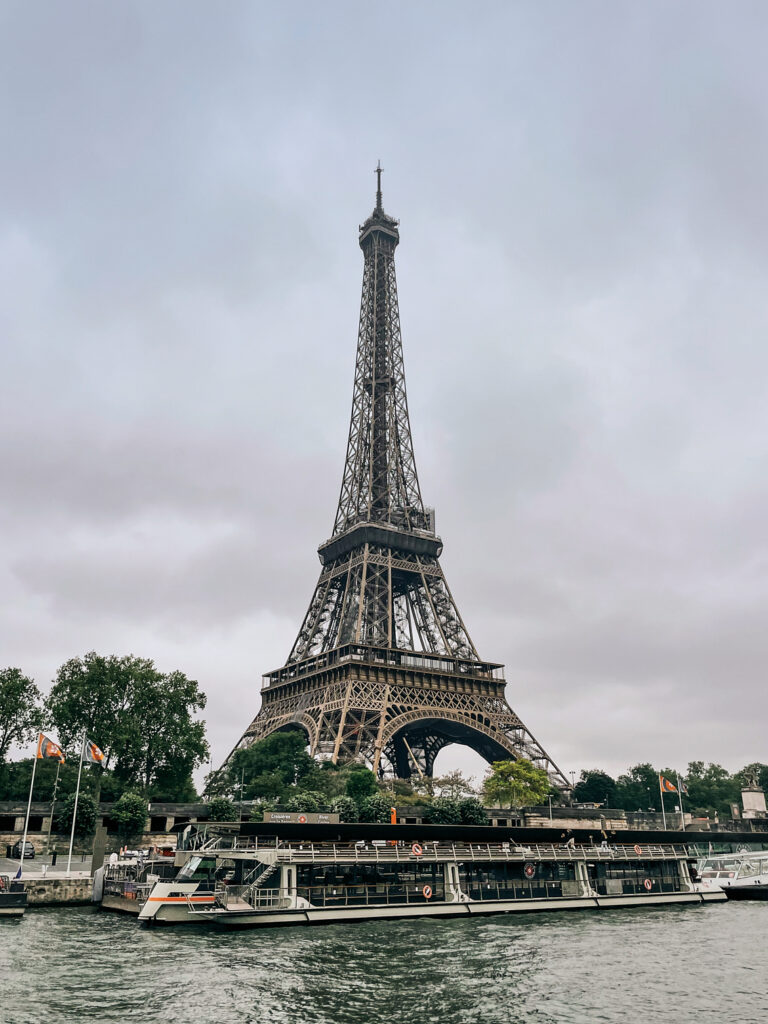
Soon enough, we’re off to the Seine. The trip starts quickly as we board the boat, unpacking bags and changing out of plane-worn clothes into something more appropriate (and cleaner). Arriving at the ship’s bar, we all grab glasses of champagne before heading to the deck outside as we set sail, turning around in the river and watching the Eiffel Tower grow smaller—a much different picture than my usual bottle of Shiner at a bar picnic table back in Austin.
Texas has plenty of its own interesting history, and I love my home state for it. But during our first few days in France, I would often look up at the buildings and marvel at just how everlasting some things are. Intricate churches in Rouen. Mirrors that Marie Antoinette looked into at Versailles. Claude Monet’s water lilies. Abbaye de Saint-Wandrille, which took hundreds of years to build and still stands today, housing a monastery and monks who brew their own beer.


Austin and I are a few decades younger than many of our travelers, and it’s occasionally a source of humor for the other alumni groups aboard who wonder aloud why a couple in their 20s have chosen to travel this way, not realizing we’re here as hosts to our Texas Exes companions. But it’s also a benefit to Austin and me. Our travelers share their own histories with us, the ways that UT has changed their lives or the other trips they’ve taken, or about their children who followed in their footsteps to become Longhorns. We are the largest alumni group traveling on this trip, and you can tell. It’s not hard to spot someone in burnt orange, and our tour directors good-naturedly tell me the Texans are always the loudest.
Our travelers also remind me of home, bringing their Texan hospitality everywhere we go, whether helping someone traverse loose cobblestones or sharing stories over dinner on the ship each night. It takes a couple of days, but I get a little more used to this other version of my life, where I temporarily live on a boat and have 26 new friends and don’t know the language whenever I leave our little floating village.
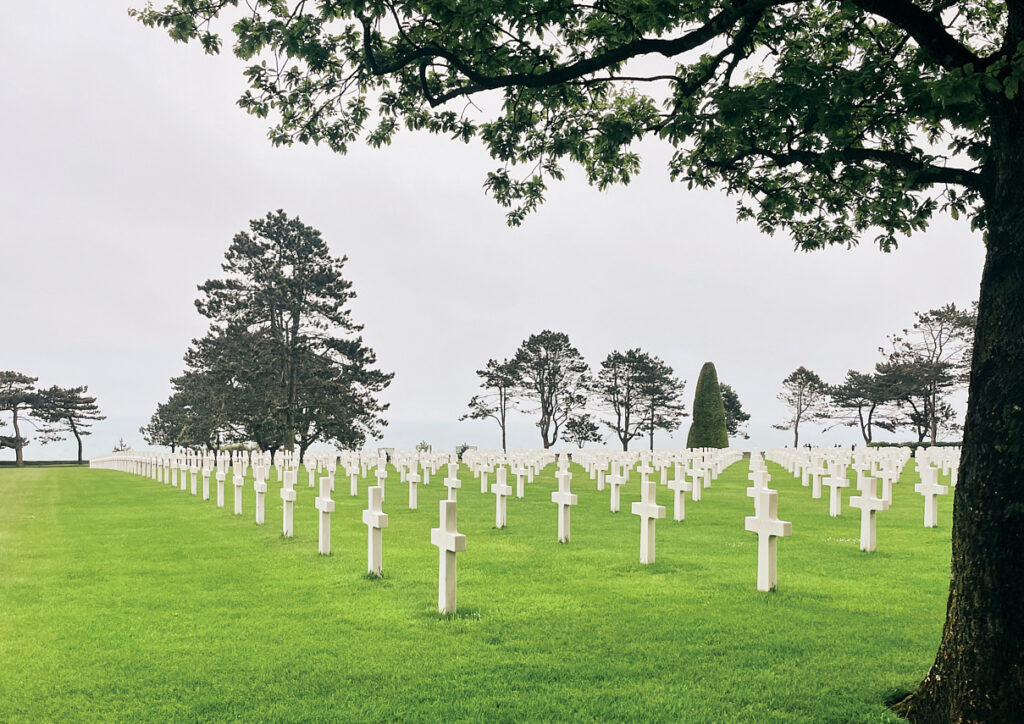
Then we arrive in Le Havre, the day before we were to learn all about D-Day. Instead of old, stately buildings, we’re greeted by a different kind of history. Le Havre is a major French port city that was almost completely destroyed during the bombings of World War II. Five thousand civilians died; 80,000 lost their homes. And between 1945 and 1964, the city was almost completely rebuilt. I look out the window at the architecture and try to imagine what it must have looked like before. I can’t. I have no concept of living in a war zone, of the bravery it takes to abandon your home, to leave, and to know you likely won’t see it again. I know how lucky I am.
The next day we visit the Normandy American Cemetery and Memorial where nearly 10,000 Americans are buried. As our guide walks us through, she stops us under a flagpole and shows us pictures of some of the men and women who served that day. But halfway through, she’s cut off by the sounds of the national anthem followed by taps. Heads bow, hats quietly come off, and more than a few tears fall.
We make our way to Omaha Beach not long after. It’s gray and windy, making it easier to imagine the cold of the water, the choppy waves, the ocean spray hitting soldiers’ faces on June 6, 1944. Some of us make our way onto the beach itself, sinking into the wet sand and leaving our own footprints. At one point I walk a few steps forward to place my hand in the Atlantic before leaping back when a wave surges forward to catch me. We’re all very quiet, holding jackets close against the chill, looking out into the gray.
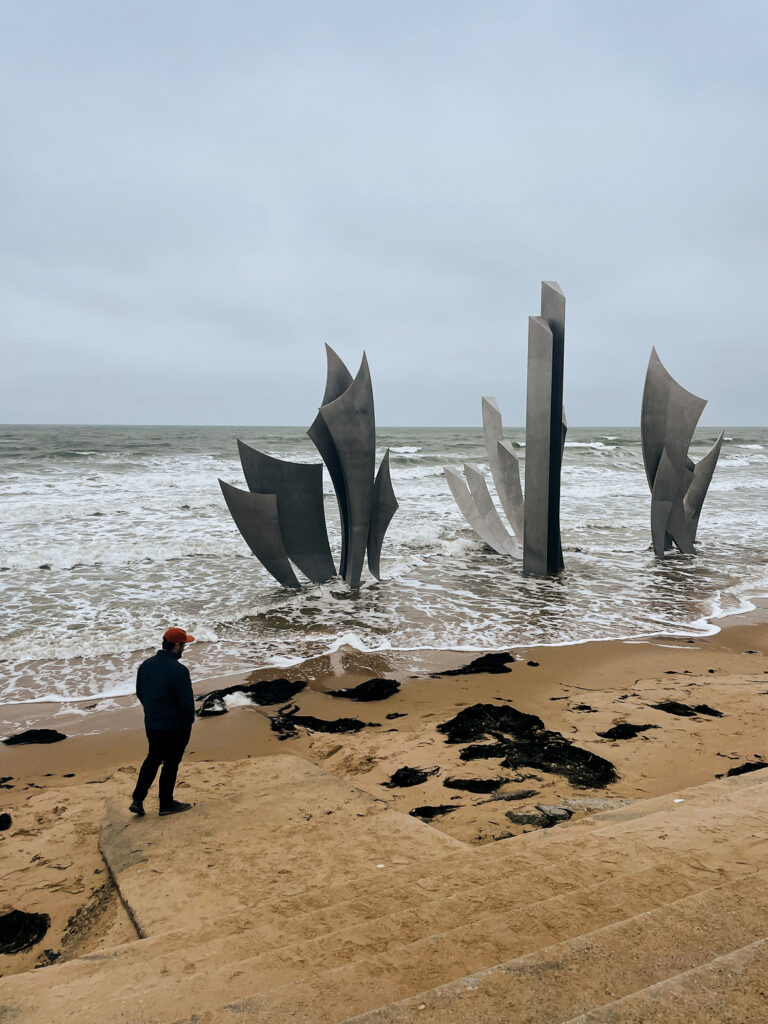
I’d arrived in France days before, having little concept of anywhere outside of my Texan bubble, and I was hyperconcious of it. But in this moment, I’m not thinking of home or my anxiety or how unfamiliar it all still feels. I’m grateful for this history I’m able to see, for the people I’m with, and for those before us, who were on this same beach decades prior and facing a far, far more dire situation. I take a deep breath and feel my feet planted firmly in the sand, albeit far from home, before I follow our travelers up the steps and back to the bus.
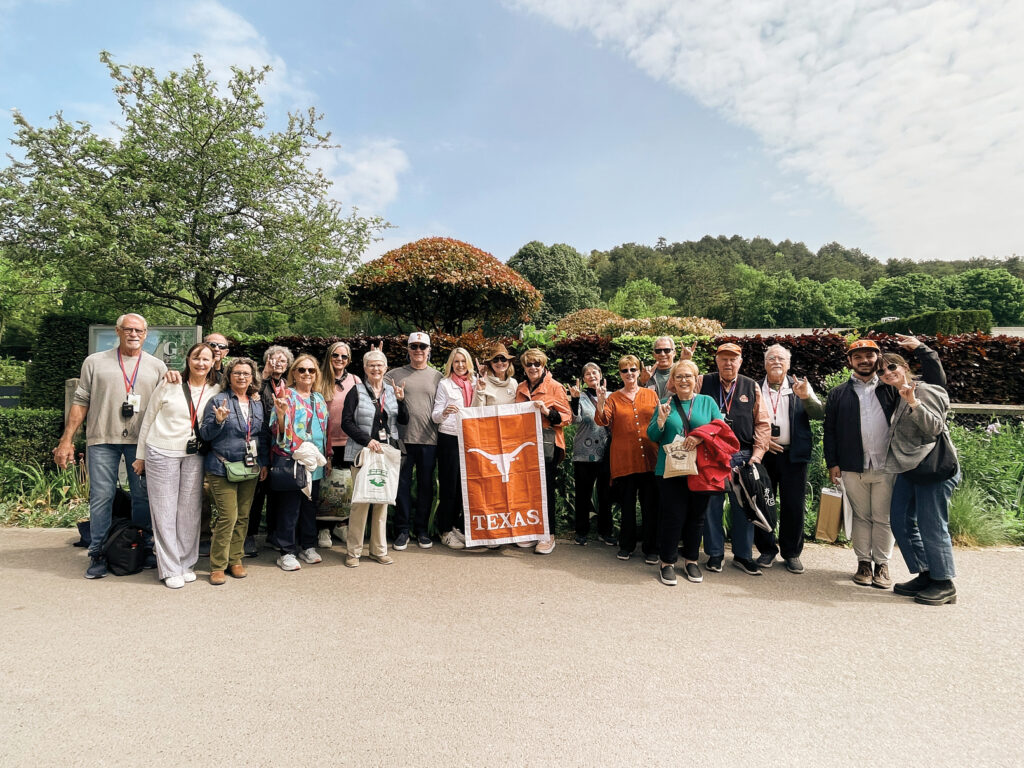
Photos courtesy of Abigail Rosenthal


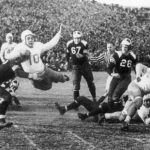











No comments
Be the first one to leave a comment.